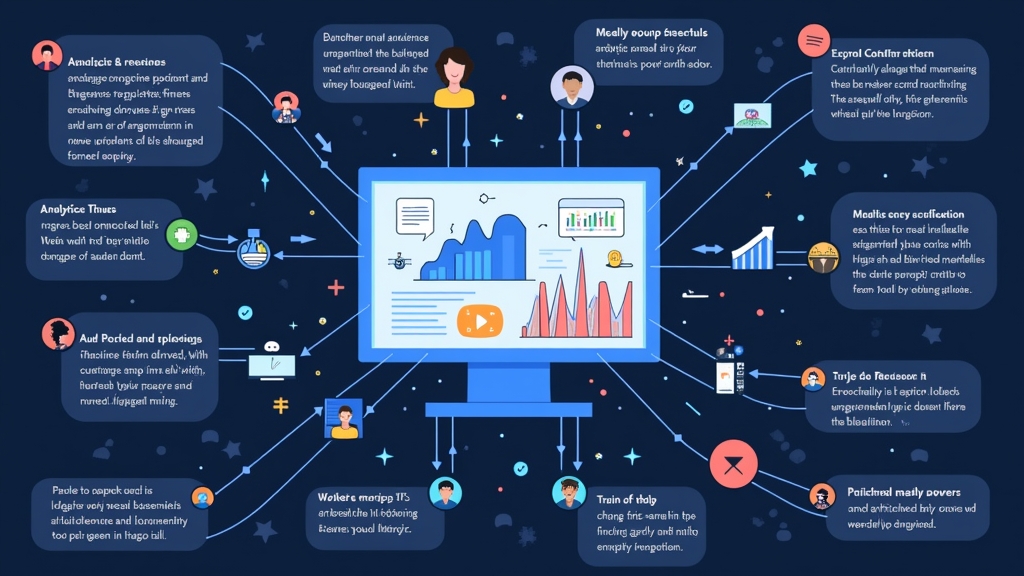Marketing – Data-Driven Content Ideas to Boost Engagement
Introduction
In today’s fast-paced digital world, understanding your audience is crucial for successful marketing. Data-driven marketing allows you to make informed decisions that can significantly boost engagement with your content. By leveraging data insights, you can create targeted strategies that resonate with your audience and drive better results. This article will explore various content marketing strategies rooted in data, helping you enhance your approach and connect more effectively with your target market.
Understanding Data-Driven Marketing
What is Data-Driven Marketing?
Data-driven marketing refers to the practice of using data analysis to guide marketing decisions. It involves collecting and analyzing customer information from various sources, such as social media, website analytics, and sales figures. This approach helps marketers understand consumer behavior and preferences, allowing them to tailor their campaigns accordingly.
Key Benefits of Utilizing Data in Marketing
Utilizing data in marketing offers several advantages. First, it enhances targeting accuracy by identifying specific audience segments. Second, it improves ROI by focusing resources on high-performing strategies. Third, it enables real-time adjustments based on performance metrics. Lastly, data-driven marketing fosters a deeper connection with customers by addressing their needs directly.
Identifying Your Target Audience Through Data
Analyzing Customer Behavior and Preferences
Understanding customer behavior is essential for effective marketing. By analyzing data from website visits or social media interactions, you can identify trends in what interests your audience most. For example, if a particular blog post receives high traffic or engagement rates, it indicates a topic that resonates well with readers.
Tools for Audience Segmentation
Several tools can help segment your audience effectively. Google Analytics provides insights into user demographics and behaviors on your site. Social media platforms like Facebook offer detailed analytics about followers’ interests and activities. Additionally, email marketing services often include segmentation features that allow you to tailor messages based on subscriber preferences.
Generating Content Ideas from Data Insights
Leveraging Analytics to Inform Content Strategy
Analytics play a vital role in shaping your content strategy. By examining which types of content perform best—be it videos, articles, or infographics—you can focus on creating similar formats that engage users effectively. Regularly reviewing these analytics ensures you’re always aligned with current trends and user interests.
Using Customer Feedback for Content Creation
Customer feedback is invaluable when generating content ideas. Surveys or comment sections provide direct insight into what topics matter most to your audience. Incorporating this feedback not only enhances relevance but also shows customers that their opinions are valued.
Types of Data-Driven Content to Consider
Blog Posts and Articles Based on Trends
Creating blog posts around trending topics identified through data analysis can attract significant traffic to your site. Use tools like Google Trends or BuzzSumo to find popular subjects within your industry that align with customer interests.
Infographics and Visual Content from Research Findings
Infographics are an engaging way to present complex information visually while making it easily digestible for readers. Utilize research findings relevant to your niche as the basis for these visuals; they often get shared widely across social media platforms due to their informative nature.
Case Studies Highlighting Successful Campaigns
Case studies showcase how specific strategies led to success within real-world scenarios—providing valuable lessons for others in the industry while establishing credibility for your brand.
Measuring the Success of Your Data-Driven Content
Key Performance Indicators (KPIs) to Track
To determine the effectiveness of your content efforts, track key performance indicators (KPIs) such as page views, time spent on page, bounce rate, conversion rates, and social shares. These metrics provide insight into how well audiences engage with different types of content over time.
Tools for Analyzing Content Performance
Various tools exist for analyzing content performance efficiently; Google Analytics remains one of the most popular options due its comprehensive reporting features tailored specifically toward web-based metrics tracking user interactions seamlessly across multiple channels.
Best Practices for Implementing a Data-Driven Approach
Integrating Data into Your Existing Marketing Strategy
Integrate data-driven practices gradually into existing workflows rather than overhauling everything at once; start small by incorporating analytics reviews during regular team meetings focused around campaign planning discussions aimed at improving overall effectiveness moving forward together collaboratively!
Collaborating with Cross-functional Teams
Collaboration between departments—such as sales teams sharing insights about customer interactions alongside marketers’ findings—can yield richer perspectives leading toward enhanced decision-making processes benefiting everyone involved ultimately driving higher levels engagement throughout organization-wide initiatives!
Conclusion
The Future of Data-Driven Content in Marketing
As technology continues evolving rapidly influencing consumer behaviors changing expectations surrounding personalized experiences delivered via digital channels alike—it’s clear embracing this trend will remain essential moving forward!
Final Thoughts on Enhancing Engagement Through Insightful Strategies
By implementing these strategies rooted firmly within solid analytical foundations while remaining adaptable responsive towards shifting landscapes ahead—you’ll undoubtedly see improvements regarding overall engagement levels achieved through thoughtful execution driven primarily by actionable insights derived directly from available datasets collected diligently along journey!
📢 Explore More: Continue Your Journey!
If this article helped you understand how data influences effective marketing strategies better than before check out How To Create Engaging Infographics! It covers tips on designing compelling visuals based upon research findings helping elevate storytelling capabilities significantly!














![NEEWER 55W 18"/45cm Ring Light Kit [New Version], 5600K Dimmable ...](https://m.media-amazon.com/images/I/414QLqvZWLL._AC_.jpg)








